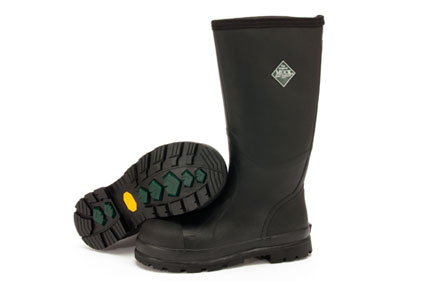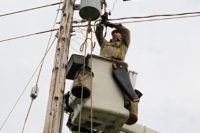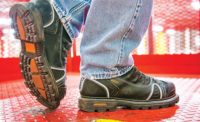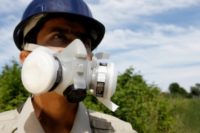| JUMP TO |
| Slips |
| Trips |
| Slp prevention |
| OSHA Regulations |
How slips, trips & falls happen
A slip is defined as the slipping of one or both feet when the grip between the shoe and the floor is too low. A trip is a sudden stop in movement of the foot by an obstacle, with continued forward movement of the body.
Slips, trips and falls may sound trivial, but they are the most common cause of injury at work. Studies have shown there is generally three times more slip than trip accidents. Some slips and trips will lead to a complete loss of balance and a fall, causing serious injuries such as broken limbs, bruises, back and head injuries. Some of these accidents can even result in the death of the worker from complications arising from injuries.
Slips
Slips happen when there is too little friction between footwear and the walking surface. A combination of the following factors will determine whether a slip accident may take place:
- Type of flooring
- Contamination on the floor such as water, oil or dust
- Type and condition of footwear
- Environmental factors such as lighting
- Capabilities of the individual who slips
Most flooring surfaces have good slip resistance when they are clean and dry, but slip resistance is greatly affected by contamination. Tiny amounts of water will form a film between the sole of the shoe and the floor. If the surface roughness of the floor is not able to break through this film, there will be no contact between footwear and flooring, making a slip likely to happen. As a general rule, if a floor is shiny and reflective, it is likely to pose a high slip risk when wet.
Trips
Trips may happen when your foot hits an object and you lose balance. Tripping accidents, and whether the worker will fall if they trip, are a result of the following factors:
- Changes in level or surface such as uneven walking surfaces
- Type of footwear and fit of footwear
- Environmental factors such as poor lighting
- Capability of the individual who trips
Studies have shown that changes in level of as little as 8mm can potentially pose a hazard for the normal walking of fit healthy people. When you trip, the forward motion of the foot is stopped suddenly by an obstacle but your body continues its forward motion. You may be unable to recover your balance and may fall forward and injure your head, leg or wrist.
How to prevent slips, trips and falls
To prevent accidents employers must identify problem areas, assess the risks, set priorities for action, decide what to do to prevent accidents, act on those decisions and check if the steps taken have been effective.
Identifying problem areas is the first step. Arrange regular workplace inspections and pay particular attention to the floor (surface or contamination), stairs (surface and handrail) and lighting.
Once a slip, trip or fall hazard is identified, assess its risk level and prioritize it for action. Risk assessments correlate the likelihood of an incident occurring against the possible consequences of the incident.
A guideline for choosing the proper footwear:
Heavy metal fab, mining, oil and gas, and construction: Top-quality leather footwear is available with technologically advanced protection to provide both a high level of worker safety as well as comfort and style. Impact protection is soft and flexible for greater comfort when walking and flexing, but hardens upon impact for extreme metatarsal protection. Other features include chemical- and liquid-resistant leathers, durable outsoles that resist heat and abrasion, wider profile steel toe caps, padded collars and tongues and a lace-locking device for ease in donning.
Mining and heavy industrial: High-quality, hand-laid rubber protective footwear is rugged and durable to stand up to tough, physically demanding mining and heavy industrial applications. Rubber boots are waterproof and can offer a variety of protective features, such as rugged outsoles, steel toe, steel midsole and metatarsal protection for mining.
Boots are available that offer steel toe protection and extreme comfort for heavy industrial environments with material designed to keep feet cool and comfortable all day.
Food and petrochemical industries: Neoprene triple-dipped process is engineered to withstand the harshest chemicals and meet the standards of the food and petrochemical industries. The triple-dipped process makes them soft and comfortable, and able to stand up to harsh chemical environments.
Neoprene footwear can be purchased with different outsoles specific to prevent slipping in different environments.
Meat processing, chemical processing and general industry: Injection-molded PVC footwear allows a boot to be made with up to 3 different PVC compounds for the upper (chemical resistance), the midsole (comfort) and the outsole (abrasion resistance) to eliminate liquid penetration.
Specialized outsoles with deep angled grooves provide maximum slip-resistance. An outsole can be self-cleaning for areas with debris such as animal fat or similar semi-solid matter. Dual compounds can provide both abrasion-resistance and enhanced surface traction.
Keep in mind
There are several OSHA regulations for foot protection, including:
- OSHA 1910.132 (d) – hazard assessment within your plant environment;
- OSHA 1910.136 – occupational foot protection, general requirements and criteria for protective footwear
- OSHA 1910.132 (f) a, iv, v – employee training and fitting for protective footwear compliance
To ensure your work area meets these regulations, it is best to consult a safety specialist to assess each work area to establish slip, trip and fall hazards. Once an assessment has been done, hazards identified and managed, and the proper footwear is selected, the job of onsite safety doesn’t end there. Areas should be constantly reassessed and managed to ensure worker safety and satisfaction.



